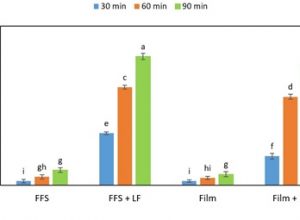Mirpoor SF, Restaino FR, Schiraldi C, Giosafatto CVL, Ruffo F, Porta R
Int. J. Mol. Sci. 2021, 22, 9147. https://doi.org/10.3390/ijms22179147
Abstract
A lignin fraction (LF) was extracted from the sea balls of Posidonia oceanica (egagropili) and extensively dialyzed and characterized by FT-IR and NMR analyses. LF resulted water soluble and exhibited a brownish-to-black color with the highest absorbance in the range of 250–400 nm, attributed to the chromophore functional groups present in the phenylpropane-based polymer. LF high-performance size exclusion chromatography analysis showed a highly represented (98.77%) species of 34.75 kDa molecular weight with a polydispersity index of 1.10 and an intrinsic viscosity of 0.15. Quantitative analysis of carbohydrates indicated that they represented 28.3% of the dry weight of the untreated egagropili fibers and 72.5% of that of LF. In particular, eight different monosaccharides were detected (fucose, arabinose, rhamnose, galactose, glucose, xylose, glucosamine and glucuronic acid), glucuronic acid (46.6%) and rhamnose (29.6%) being the most present monosaccharides in the LF. Almost all the phenol content of LF (113.85 ± 5.87 mg gallic acid eq/g of extract) was water soluble, whereas around 22% of it consisted of flavonoids and only 10% of the flavonoids consisted of anthocyanins. Therefore, LF isolated from egagropili lignocellulosic material could be defined as a water-soluble lignin/carbohydrate complex (LCC) formed by a phenol polymeric chain covalently bound to hemicellulose fragments. LCC exhibited a remarkable antioxidant activity that remained quite stable during 6 months and could be easily incorporated into a protein-based film and released from the latter overtime. These findings suggest egagropili LCC as a suitable candidate as an antioxidant additive for the reinforcement of packaging of foods with high susceptibility to be deteriorated in aerobic conditions.
